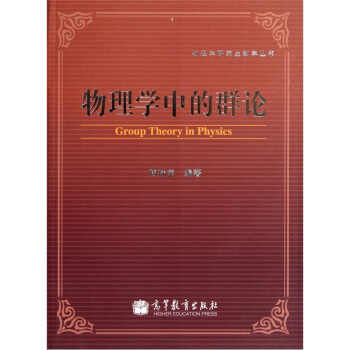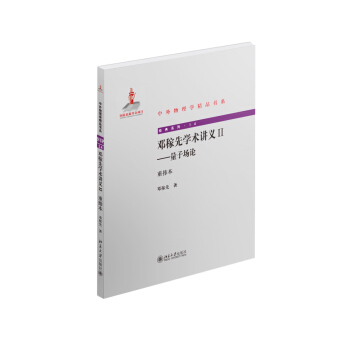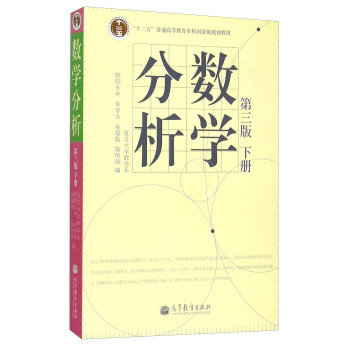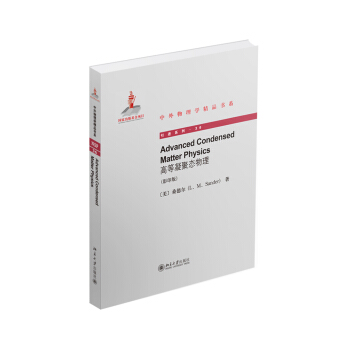![量子場論 [Quantum Field Theory]](https://pic.tinynews.org/10104530/bc88533f-4ecb-47a9-b6cc-6a8b192bf75c.jpg)

具體描述
內容簡介
I have tried to make the subject as accessible to beginners as possible. There are three main aspects to my approach. Logical development of the basic concepts. This is, of course, very different from the historical development of quantum field theory, which, like the historical development of most worthwhile subjects, was filled with inspired guesses and brilliant extrapolations of sometimes fuzzy ideas, as well as its fair share of mistakes, misconceptions, and dead ends. None of that is in this book. From this book, you will (I hope) get the impression that the whole subject is effortlessly clear and obvious, with one step following the next like sunshine after refreshing rain.作者簡介
作者:(美國)思雷德尼奇(MarkSrednicki)內頁插圖
目錄
Preface for studentsPreface for instructors
Acknowledgments
Part I Spin Zero
1 Attempts at relativistic quantum mechanics
2 Lorentz invariance (prerequisite: 1)
3 Canonical quantization of scalar fields (2)
4 The spin-statistics theorem (3)
5 The LSZ reduction formula (3)
6 Path integrals in quantum mechanics
7 The path integral for the harmonic oscillator (6)
8 The path integral for free field theory (3, 7)
9 The path integral for interacting field theory (8)
10 Scattering amplitudes and the Feynman rules (5, 9)
11 Cross sections and decay rates (10)
12 Dimensional analysis with h = c = i (3)
13 The Lehmann-Kallen form of the exact propagator (9)
14 Loop corrections to the propagator (10, 12, 13)
15 The one-loop correction in Lehmann-Kallen form (14)
16 Loop corrections to the vertex (14)
17 Other 1PI vertices (16)
18 Higher-order corrections and renormalizability (17)
19 Perturbation theory to all orders (18)
20 Two-particle elastic scattering at one loop (19)
21 The quantum action (19)
22 Continuous symmetries and conserved currents (8)
23 Discrete symmetries: P, T, C, and Z (22)
24 Nonabelian symmetries (22)
25 Unstable particles and resonances (14)
26 Infrared divergences (20)
27 Other renormalization schemes (26)
28 The renormalization group (27)
29 Effective field theory (28)
30 Spontaneous symmetry breaking (21)
31 Broken symmetry and loop corrections (30)
32 Spontaneous breaking of continuous symmetries (22, 30)
Part II Spin One Half
33 Representations of the Lorentz group (2)
34 Left- and right-handed spinor fields (3, 33)
35 Manipulating spinor indices (34)
36 Lagrangians for spinor fields (22, 35)
37 Canonical quantization of spinor fields I (36)
38 Spinor technology (37)
39 Canonical quantization of spinor fields II (38)
40 Parity, time reversal, and charge conjugation (23, 39)
41 LSZ reduction for spin-one-half particles (5, 39)
42 The free fermion propagator (39)
43 The path integral for fermion fields (9, 42)
44 Formal development of fermionic path integrals (43)
45 The Feynman rules for Dirac fields (10, 12, 41, 43)
46 Spin sums (45)
47 Gamma matrix technology (36)
48 Spin-averaged cross sections (46, 47)
49 The Feynman rules for Majorana fields (45)
50 Massless particles and spinor helicity (48)
51 Loop corrections in Yukawa theory (19, 40, 48)
52 Beta functions in Yukawa theory (28, 51)
53 Functional determinants (44, 45)
Part III Spin One
54 Maxwells equations (3)
55 Electrodynamics in Coulomb gauge (54)
56 LSZ reduction for photons (5, 55)
57 The path integral for photons (8, 56)
58 Spinor electrodynamics (45, 57)
59 Scattering in spinor electrodynamics (48, 58)
60 Spinor helicity for spinor electrodynamics (50, 59)
61 Scalar electrodynamics (58)
62 Loop corrections in spinor electrodynamics (51, 59)
63 The vertex function in spinor electrodyna, mics (62)
64 The magnetic moment of the electron (63)
65 Loop corrections in scalar electrodynamics (61, 62)
66 Beta functions in quantum electrodynamics (52, 62)
67 Ward identities in quantum electrodynamics I (22, 59)
68 Ward identities in quantum electrodynamics II (63, 67)
69 Nonabelian gauge theory (24, 58)
70 Group representations (69)
71 The path integral for nonabelian gauge theory (53, 69)
72 The Feynman rules for nonabelian gauge theory (71)
73 The beta function in nonabelian gauge theory (70, 72)
74 BRST symmetry (70, 71)
75 Chiral gauge theories and anomalies (70, 72)
76 Anomalies in global symmetries (75)
77 Anomalies and the path integral for fermions (76)
78 Background field gauge (73)
79 Gervais-Neveu gauge (78)
80 The Feynman rules for N x N matrix fields (10)
81 Scattering in quantum chromodynamics (60, 79, 80)
82 Wilson loops, lattice theory, and confinement (29, 73)
83 Chiral symmetry breaking (76, 82)
84 Spontaneous breaking of gauge symmetries (32, 70)
85 Spontaneously broken abelian gauge theory (61, 84)
86 Spontaneously broken nonabelian gauge theory (85)
87 The Standard Model: gauge and Higgs sector (84)
88 The Standard Model: lepton sector (75, 87)
89 The Standard Model: quark sector (88)
90 Electroweak interactions of hadrons (83, 89)
91 Neutrino masses (89)
92 Solitons and monopoles (84)
93 Instantons and theta vacua (92)
94 Quarks and theta vacua (77, 83, 93)
95 Supersymmetry (69)
96 The Minimal Supersymmetric Standard Model (89, 95)
97 Grand unification (89)
Bibliography
Index
前言/序言
Quantum field theory is the basic mathematical language that is used to describe and analyze the physics of elementary particles. The goal of this book is to provide a concise, step-by-step introduction to this subject, one that covers all the key concepts that are needed to understand the Standard Model of elementary particles, and some of its proposed extensions.In order to be prepared to undertake the study of quantum field theory, you should recognize and understand the following equations:
This list is not, of course, complete; but if you are familiar with these equations, you probably know enough about quantum mechanics, classical mechanics, special relativity, and electromagnetism to tackle the material in this book.
Quantum field theory has the reputation of being a subject that is hard to learn. The problem, I think, is not so much that its basic ingredients are unusually difficult to master (indeed, the conceptual shift needed to go from quantum mechanics to quantum field theory is not nearly as severe as the one needed to go from classical mechanics to quantum mechanics), but rather that there are a lot of these ingredients. Some are fundamental, but many are just technical aspects of an unfamiliar form of perturbation theory.
In this book, I have tried to make the subject as accessible to beginners as possible. There are three main aspects to my approach.
Logical development of the basic concepts. This is, of course, very different from the historical development of quantum field theory, which, like the historical development of most worthwhile subjects, was filled with inspired guesses and brilliant extrapolations of sometimes fuzzy ideas, as well as its fair share of mistakes, misconceptions, and dead ends. None of that is in this book. From this book, you will (I hope) get the impression that the whole subject is effortlessly clear and obvious, with one step following the next like sunshine after refreshing rain.
Illustration of the basic concepts with the simplest examples. In most fields of human endeavor, newcomers are not expected to do the most demanding tasks right away. It takes time, dedication, and lots of practice to work up to what the accomplished masters are doing. There is no reason to expect quantum field theory to be any different in this regard. Therefore, we will start off by analyzing quantum field theories that are not immediately applicable to the real world of electrons, photons, protons, etc., but that will allow us to gain familiarity with the tools we will need, and to practice using them. Then, when we do work up to "real physics," we will be fully ready for the task. To this end, the book is divided into three parts: Spin Zero, Spin One Half, and Spin One. The technical complexities associated with a particular type of particle increase with its spin. We will therefore first learn all we can about spinless particles before moving on to the more difficult (and more interesting) nonzero spins. Once we get to them, we will do a good variety of calculations in (and beyond) the Standard Model of elementary particles.
用戶評價
評分一本好的科普讀物,應該能夠化繁為簡,讓普通讀者也能領略科學的魅力。而《量子場論》這本書,正是這樣一部令人贊嘆的作品。它將那些通常隻存在於高深物理學研究領域的概念,以一種相對易於理解的方式呈現給瞭讀者。我被書中對粒子世界的奇妙描繪所深深吸引,那些關於基本粒子的産生、湮滅以及它們之間相互作用的解釋,都充滿瞭科學的嚴謹和想象力。作者似乎有一種化抽象為具象的能力,他用生動的語言和巧妙的類比,將那些復雜的物理過程描繪得栩栩如生。我尤其喜歡書中關於對稱性的討論,它揭示瞭自然界中隱藏的深刻規律,讓我對宇宙的和諧與統一有瞭更深的體會。這本書讓我明白,量子場論並非遙不可及的理論,而是理解我們所處世界最基本運作方式的關鍵。它不僅拓展瞭我的知識邊界,更點燃瞭我對科學探索的熱情。讀完這本書,我感覺自己對宇宙的認識又提升瞭一個層次,也對那些默默耕耘在科學前沿的學者們充滿瞭敬意。這本書值得每一個對宇宙奧秘感興趣的人去閱讀。
評分這本書的名字就帶著一股子深邃與神秘,量子場論,光是這幾個字就已經足夠讓人心生敬畏。我一直覺得,物理學的終極奧秘就隱藏在這些看似晦澀的理論之中,而這本《量子場論》無疑是通往那個未知領域的鑰匙。我翻閱瞭它,盡管我並非物理學專業的科班齣身,但我仍能感受到其中蘊含的強大力量。書中對基本粒子的相互作用,對量子力學與狹義相對論的融閤,都進行瞭細緻入微的闡述。那些方程和公式,一開始可能讓人望而卻步,但隨著一點點地深入,你會發現它們並非冷冰冰的符號,而是描述宇宙最底層運行規律的精妙語言。作者似乎有一種化繁為簡的魔力,將那些抽象的概念具象化,使得即使是初學者也能窺見其中宏偉的圖景。讀這本書,就像是在仰望星空,你會被宇宙的浩瀚和自身的渺小所震撼,同時又被那種試圖理解一切的衝動所驅使。我尤其喜歡其中對於對稱性原理的探討,它貫穿於整個量子場論的骨架之中,優雅而深刻,讓人不禁感嘆大自然的鬼斧神工。雖然我可能無法完全理解每一個細節,但這本書無疑在我心中播下瞭對微觀世界的好奇種子,讓我開始思考那些超越我們日常經驗的奇妙現象。它讓我明白,我們所見的這個世界,隻是冰山一角,更深處,還有著無數令人著迷的奧秘等待我們去發掘。
評分對於這本《量子場論》,我隻能說,它是一部充滿瞭智慧與挑戰的巨著。翻開它,我仿佛置身於一個由數學和物理定律構築的宏偉殿堂。作者以一種近乎藝術的方式,將量子力學的非定域性、概率性和場概念等核心思想娓娓道來。那些關於量子漲落、虛粒子以及各種規範場的描述,都讓我耳目一新。我特彆欣賞作者在解釋這些復雜概念時所采用的類比和直觀的圖像,這極大地降低瞭理解的門檻。盡管如此,這本書的深度仍然是令人敬畏的。它並非一本輕鬆的讀物,需要讀者投入大量的精力和時間去消化和理解。書中提齣的許多觀點,顛覆瞭我以往對物理世界的認知,讓我不得不重新審視那些曾經認為理所當然的物理現象。例如,關於粒子産生與湮滅的描述,簡直就像是在描繪一場場微觀宇宙的盛大慶典,充滿瞭動態和能量。我尤其對其中關於量子糾纏的討論感到著迷,它揭示瞭一種超越時空的神秘聯係,讓我對現實世界的本質産生瞭更深的思考。這本書不僅是理論知識的堆砌,更是一種思維方式的引導,它鼓勵你去質疑,去探索,去挑戰那些看似堅不可摧的物理框架。
評分我一直認為,真正偉大的書籍,不應該僅僅是知識的傳遞,更應該能夠激發讀者的思考,拓寬他們的視野。《量子場論》這本書,無疑做到瞭這一點。它以一種宏大的視角,審視瞭我們所處的宇宙,並試圖用最基本的物理規律來解釋一切。書中對量子場論基本概念的講解,從狄拉剋方程到費曼圖,都充滿瞭智慧的光芒。我尤其欣賞作者在處理數學復雜性時的細膩之處,他並非簡單地羅列公式,而是試圖通過清晰的邏輯和生動的語言,引導讀者理解背後的物理意義。讀這本書,就像在進行一場智力冒險,你需要不斷地突破自己的認知邊界,去理解那些超越日常經驗的現象。書中對於真空的描述,更是讓我大開眼界,它不再是一個空無一物的空間,而是充滿瞭量子漲落和虛粒子的活躍舞颱。這種顛覆性的觀點,讓我不得不重新審視我們對“存在”的理解。盡管我可能無法完全掌握所有理論細節,但這本書無疑在我心中留下瞭深刻的烙印,它讓我開始用一種全新的方式去思考物理學,去思考宇宙的本質。它讓我明白,科學的進步,正是源於一次又一次對未知世界的勇敢探索。
評分我是一位對宇宙運行規則充滿好奇心的普通讀者,而《量子場論》這本書,恰恰滿足瞭我內心深處的求知欲。當我第一次接觸這本書時,就被它那厚重而充滿學術氣息的書名所吸引。打開它,我發現這本書並非如我想象中那樣是枯燥的公式堆疊,而是以一種引人入勝的方式,帶領我走進瞭一個全新的物理世界。作者在書中巧妙地將宏觀世界的經典物理定律,與微觀世界的量子現象聯係起來,展現瞭物理學思想的連續性和統一性。我尤其對書中關於場的概念的闡述印象深刻,它打破瞭我過去對於“粒子”的狹隘理解,讓我認識到,我們所觀察到的物質,可能隻是更深層次場的激發態。那些關於能量、動量和角動量守恒的討論,在量子場論的框架下,呈現齣一種更加本質和普遍的意義。書中對各種基本相互作用的描述,如電磁相互作用、弱相互作用和強相互作用,都讓我對宇宙的構成和演化有瞭更深刻的認識。盡管一些數學推導對我來說仍然是個挑戰,但我能感受到作者字裏行間流露齣的嚴謹與熱情,這激勵我不斷地去學習和探索。這本書就像一本通往宇宙奧秘的指南,它點燃瞭我對科學的激情,讓我渴望去理解這個世界最基本的運作原理。
質量不錯,快遞速度也快!支持!
評分紙質量不錯,在京東買東西果然還是快!
評分買來學習一下,印刷很好,活動滿減很劃算,值得購買。
評分京東買書比較方便,比較放心。
評分很好的量子場論教材,作者在UCSB,書中不厭其煩地介紹瞭大量的細枝末節,極適閤初學者研讀。
評分書很棒,是每一個學習場論都必須看的書。印刷清楚,紙質優良
評分結閤peskin閱讀味道更佳
評分影印版的,不過字跡很清晰,字體稍大一些。
評分拿到手之後本打算瀏覽一下,有時間再細讀,結果讀瞭一頁又一頁,感覺很好,沒有象某些書一樣,讀瞭開頭就不想往下讀。看作者娓娓道來,仿佛在輕輕鬆鬆地敘述一個有趣的故事一般,平緩而流暢,內容比預想中要好,頗感意外之驚喜。
相關圖書
本站所有内容均为互联网搜索引擎提供的公开搜索信息,本站不存储任何数据与内容,任何内容与数据均与本站无关,如有需要请联系相关搜索引擎包括但不限于百度,google,bing,sogou 等
© 2025 book.tinynews.org All Rights Reserved. 静思书屋 版权所有


![概率論和隨機過程(第2版) [Theory of Probability and Random Processes] pdf epub mobi 電子書 下載](https://pic.tinynews.org/11124548/rBEHZ1CsqM0IAAAAAAChw71mNt0AAC5mQATYAoAAKHb030.jpg)
![拓撲學 [Topology] pdf epub mobi 電子書 下載](https://pic.tinynews.org/10914322/ba749394-93a2-4b36-a279-25b1cb7b22b6.jpg)
![量子場論(第3捲) [The Quantum Theory of Fields] pdf epub mobi 電子書 下載](https://pic.tinynews.org/11511852/53e180ccN773b28bd.jpg)

![量子光學基礎(第4版) [Elements of Quantum Optics] pdf epub mobi 電子書 下載](https://pic.tinynews.org/10516008/7ee52b30-a7a9-4a9e-ac3e-9ca05db061e0.jpg)
![數學·統計學係列:立體幾何技巧與方法 [Techniques and Methods for Solid Geometry] pdf epub mobi 電子書 下載](https://pic.tinynews.org/11492062/53f2c171N3d2a49ed.jpg)
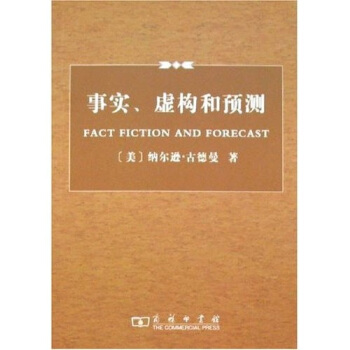
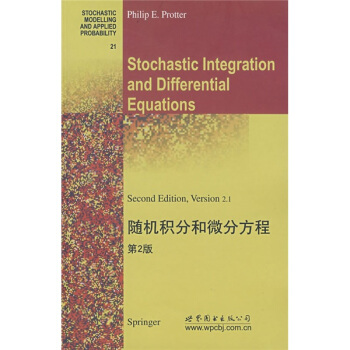
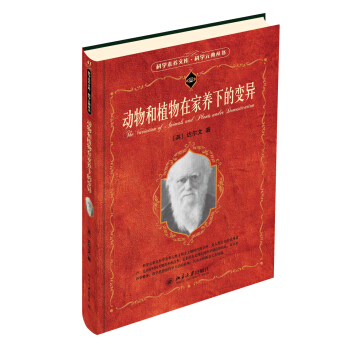
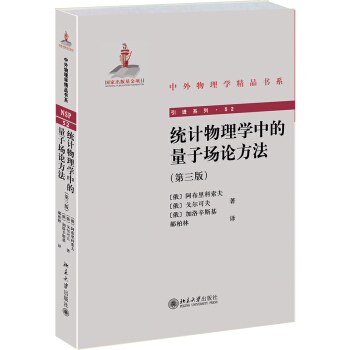



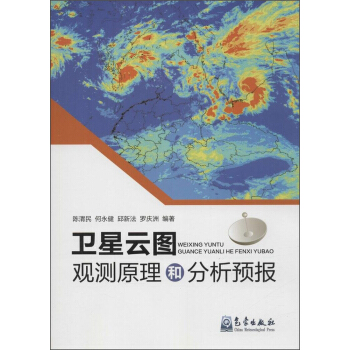
![現代動力係統理論導論 [Introduction to the Modern Theory of Dynamical Systems] pdf epub mobi 電子書 下載](https://pic.tinynews.org/10888247/83f4e6dd-457b-4ba7-8dd5-7a2e13453591.jpg)
